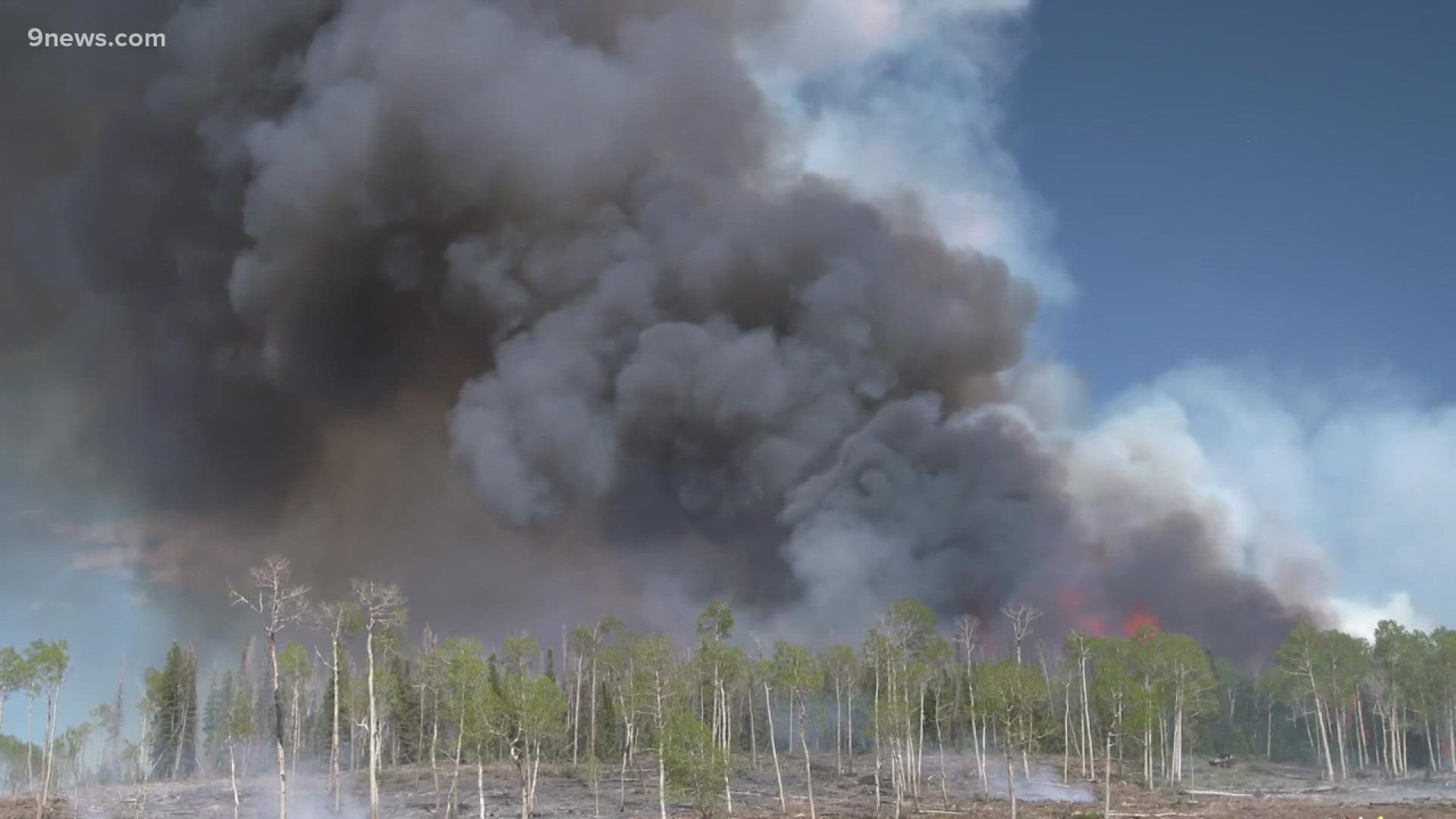BOULDER, Colo. — Wildfires are getting so big, and wildfire seasons are lasting so long, that they’re now impacting the earth’s climate.
Scientists from the National Center for Atmospheric Research (NCAR) in Boulder just published a paper using the 2020 bushfires in Australia as evidence.
“We were really surprised," said climate scientist John Fasullo. "This is the first time that we’ve seen a global scale climate response to wildfires”
Fasullo said the bulk of the bushfires lasted for six months from Nov. 2019 to April 2020 and burned 46 million acres – that would cover three quarters of the state of Colorado.
“They mimicked a major volcanic eruption," he said. "One of those big eruptions that happen every 30 years or so, because there was just such an intense pulse of emissions into the atmosphere.”
Fassulo said the southern hemisphere has cleaner air and less clouds compared to the northern hemisphere. The smoke particles from the bushfires helped form more clouds because their were more particles to be used for condensation nuclei.
That resulted in additional clouds with smaller droplets which in turn reflected more solar radiation.
He said that cooled the global climate by about .06 degrees Celsius.
“And so we got this big cooling pulse in our simulations in response to the wildfires because of the way the clouds actually changed," said Fassulo. "It wasn’t the ash so much, but modification of the cloud microphysics.”
COVID-19 Lockdown Comparison
Using a another simulation with the same computer model, Fassulo was able to show an opposite effect on the 2020 climate due to reduced motor vehicle traffic during the COVID-19 lockdowns.
"There was a slight warming during the lockdowns," he said. "It essentially it was just enough to cancel out the cooling effect of the wildfires."
2020 still tied 2016 as the warmest year on the global temperature record. Fassulo said that both the warming from lockdown and the cooling from the bushfires are short term climate events.
"These are just interesting blips on the way to a warming climate," he said. "It's still the amount of CO2 that gets added to the atmosphere that will determine temperature five to 10 years out or longer."
Wildfires Causing Warming
It is also possible for wildfires to cause climate warming.
Darker wildfire particulates like soot and ash can be deposited on ice sheets and glaciers, particularly in the northern hemisphere where the snow and ice are more abundant.
"That can increase the amount of shortwave radiation absorbed, and lead to accelerated melting of snow and ice sheets," said Fassulo.
He said that reduces the overall albedo of the polar regions which warms the oceans and the atmosphere.
Prediction Long-Term Climate Impacts
"It's abundantly clear that our assumptions about the future with respect to wildfires are not adequate in these climate simulations," said Fassulo.
He said that most of the climate models used to predict long-term climate warming are not skillful enough to include emissions estimates from wildfires that may result from the warming and drying itself.
He also said the way the models resolve cloud formation and impact is inadequate.
"And now what we are finding is that those two things really interface here," said Fasullo. "So we hope to lead the way at NCAR to get our climate models to do these types of microphysical interactions that we're talking about."
Impact of U.S. Wildfires
Fassulo said that the 2020 wildfire season in the U.S. did not have a noticeable impact on global temperature.
He said the impacts are different because the air in the northern hemisphere is already polluted with other particles which changes potential interactions between wildfire smoke and the atmosphere.
The U.S. wildfires also happened at a higher latitude than the Australian bushfires.
"The Australia fires occurred at around 30 degrees latitude so most of the cloud droplets stared out as liquid matter," Fassulo said. "Our fires are mainly north of 40 degrees, so there will be a lot of ice formation initially."
He said that will have an impact on droplet size and cloud size which would lead to a different amount of albedo.
Also wildfires in North America have not been as big as the southern hemisphere. About 10 million acres burned in the U.S. during the 2020 wildfire season, and that is still nearly 5 times smaller than the fires in Australia.
"It's not a complete apples to apples comparison because the forests are different here with possibly much more biomass," said Fassulo. "But it is still difficult for us to relate to the shear size of Australia's fires in 2020."
Bushfires Impact La Niña
The bushfires may also be partially to blame for the lack of snow in Colorado and much of the southwestern U.S. last winter, and possibly again this coming winter.
“The suggestion from our results, and one of the reasons they’re important is that it seems to link the wildfires to the La Niña that we had last winter and that's going to continue into this winter,” said Fasullo.
He said Colorado winter weather circulations originate in the oceans of the southern hemisphere. The Intertropical Convergence Zone (ITCZ) was forced to move northward as a result of the bushfires and that predisposes the system towards a La Niña event.
"It really speaks to the coupled nature of the climate system and why it makes it so fascinating to study," said Fassulo. "I do believe this will lead to better skill in predicting La Niña and El Niño events."
SUGGESTED VIDEOS: Science & Weather

